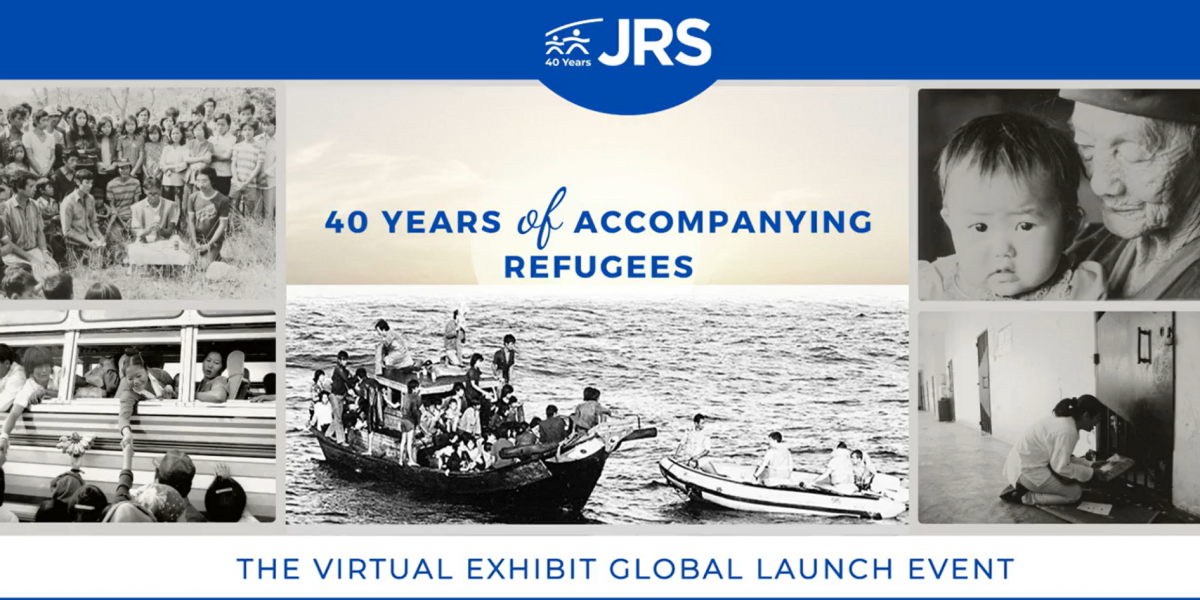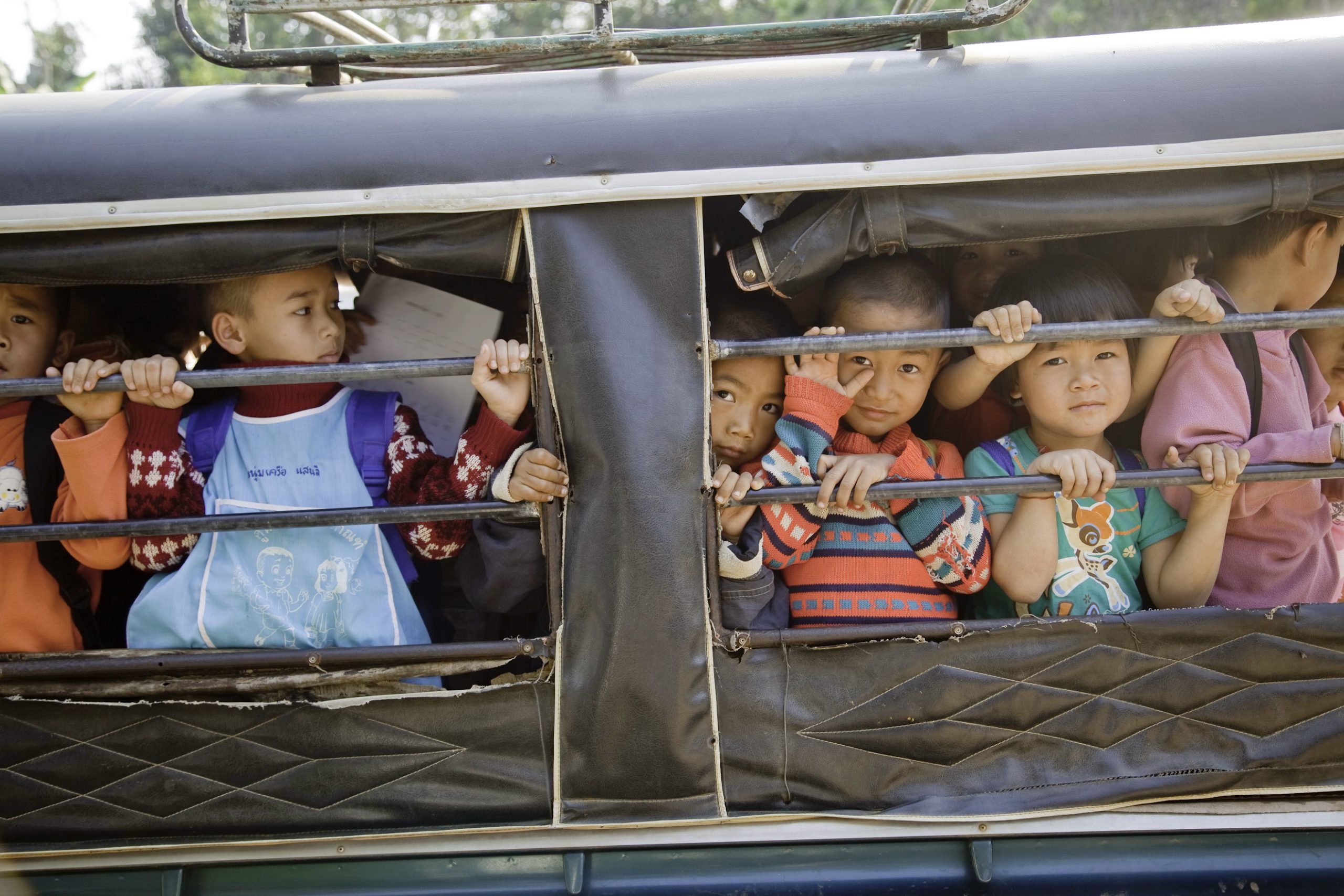Remarks at the launch of the on-line exhibit by Mark Raper SJ
24 January 2022|Mark Raper SJ

My Home Exhibition
Celebrating 40 years of Jesuit Refugee Service
Remarks at the launch of the on-line exhibit by Mark Raper SJ
27 November 2021
On three occasions I met Fr Pedro Arrupe in association with Jesuit Refugee Service (JRS). The first was in his spare office in Rome in June 1980. He was consulting many people on how the Jesuits could respond to the refugee crisis, in particular to the many people the desperately leaving Vietnam. Rather brashly, I challenged his assertion that the Society will benefit from its service to refugees. “We cannot undertake a service so that it will benefit us”. He responded gently, “We must first of all serve people in need, but those who come face-to-face with refugees will find in them a source of wisdom and blessing”.
The second meeting was just over a year later in Manila, only days before he suffered his cerebral stroke. Jesuit Refugee Service had been formally launched in November of the year before. He came to where I was staying in Santa Ana and asked me to work with him to coordinate the service in Asia. It was a meeting of five or ten minutes. That night or perhaps the next morning he left for Bangkok where he met the Jesuits who had already come in response to his appeal to serve in the refuges camps. After the brief stop in Bangkok he left for Rome and suffered his stroke while on that flight. Soon after that, it was Fr Paolo Dezza, the Vicar appointed by Pope John Paul II, who actually appointed me. For the next twenty years – all the eighties in Asia and through the nineties from Rome, working closely with Fr Peter Hans Kolvenbach I was engaged in putting a structure in place for JRS that would enable Pedro Arrupe’s vision of serving, accompanying and defencing the rights of refugees to be effective. A body for the spirit. But the structure is only the means and not the end of the service.
The third meeting was some few years later, in the early eighties. Fr Dieter Scholz, then International Director of JRS, brought me to the infirmary of the General Curia to meet Fr. Arrupe. Though almost paralysed, Fr. Arrupe clearly understood that I was from JRS. He could not find the words, so paper and pencil was brought. With his left hand, Fr. Arrupe shakily drew a map of India, then the droplet shape of the island next to it and pointed to the shape of Sri Lanka. He was asking me, ‘What is JRS doing to help the people of Sri Lanka?’ I am sure Fr. Arrupe was doing the only thing still in his power for the victims of that conflict, namely praying for them. He would be happy to know that JRS is still responding in a practical way to his question, by accompanying, serving and defending the victims of the long running civil wars, interethnic and ideological strife, climate disasters and the victims of the inequity that exists so markedly in today’s world.
When Fr Arrupe met with JRS Workers in Bangkok, it was 6 August 1981, Hiroshima Day. As you know, he was in Hiroshima when the bomb fell in 1945. He likened the refugee crisis to the explosion of that atomic bomb – it not only creates physical victims, but it explodes on the imaginations of people. So JRS not only accompanies and serves the refugees and forcibly displaced persons, JRS also advocates on their behalf. JRS responds to the trauma created for all by the suffering and exclusion of some. That is why there is a place for everyone in responding to the plight of refugees, in or together with JRS. Because we are all impacted by their suffering – when a part of the body suffers, the whole body is in trouble, as St Paul would tell us. There is a place for all types of skills and for all who have a heart for people. Historians, teachers, nurses, house wives, community builders. All can have a role in responding to the needs of refugees. JRS networks to bring many human resources together.
One of our early JRS workers Sr Virginia Hasson, reflecting on what she had learned in a decade of serving refugees from Cambodia and then from Sudan, outlined some principles of the JRS way of working that she learned in her time with JRS. Here are just a few of them:
If you were to ask me what are the lasting impressions of those twenty years I spent with the refugee service, of course I would describe the unforgettable country situations – Rwanda in the weeks after the genocide in 1994; or reaching Sarajevo when it was still under siege from snipers; or the gentle welcome given by the Cambodian refugees at the Thai border; the industrious Burmese students from the 1988 uprising; the miles and miles of camps along one side of the road that separates Mozambique from Malawi, and their singing competitions; or the vast waterless camps of Afghan refugees in Northwest Frontier Province of Pakistan; or the resilient tough Tigrayans in their harsh terrain. These last two, sadly, see history repeating today.
But the lasting and deepest impressions are from the people and their stories. May I just share one of them? Anne Noeum Yok Tan of Cambodia arrived in Thailand camps with two of her twelve children. The other ten and her husband, Pierre Chhuom Somchay had all been killed by or died because of the Khmer Rouge. But Chhuom Somchay had written on the back of the baptismal certificate of each child a message to each of them and a prayer. Anne still had those pages. She had collected another dozen children and was looking after them along with her own. She wrote:
The JRS story is about the lives and hopes of people we know personally, whose faces you see in this exhibition. This personal knowledge constantly transforms our understanding. JRS opens a door — beyond transitory and shocking images — into the inspiring lives of people struggling to defend their rights, protect their families and give their children a future. The JRS way of walking with refugees offers fresh perspectives on world events, while highlighting compassion, understanding and helpful paths to action. Fr. Arrupe was right. JRS has proved to be of service to people in need. But it also continues to be a source of wisdom and blessing to everyone it places face-to-face with some of the world’s displaced people.


